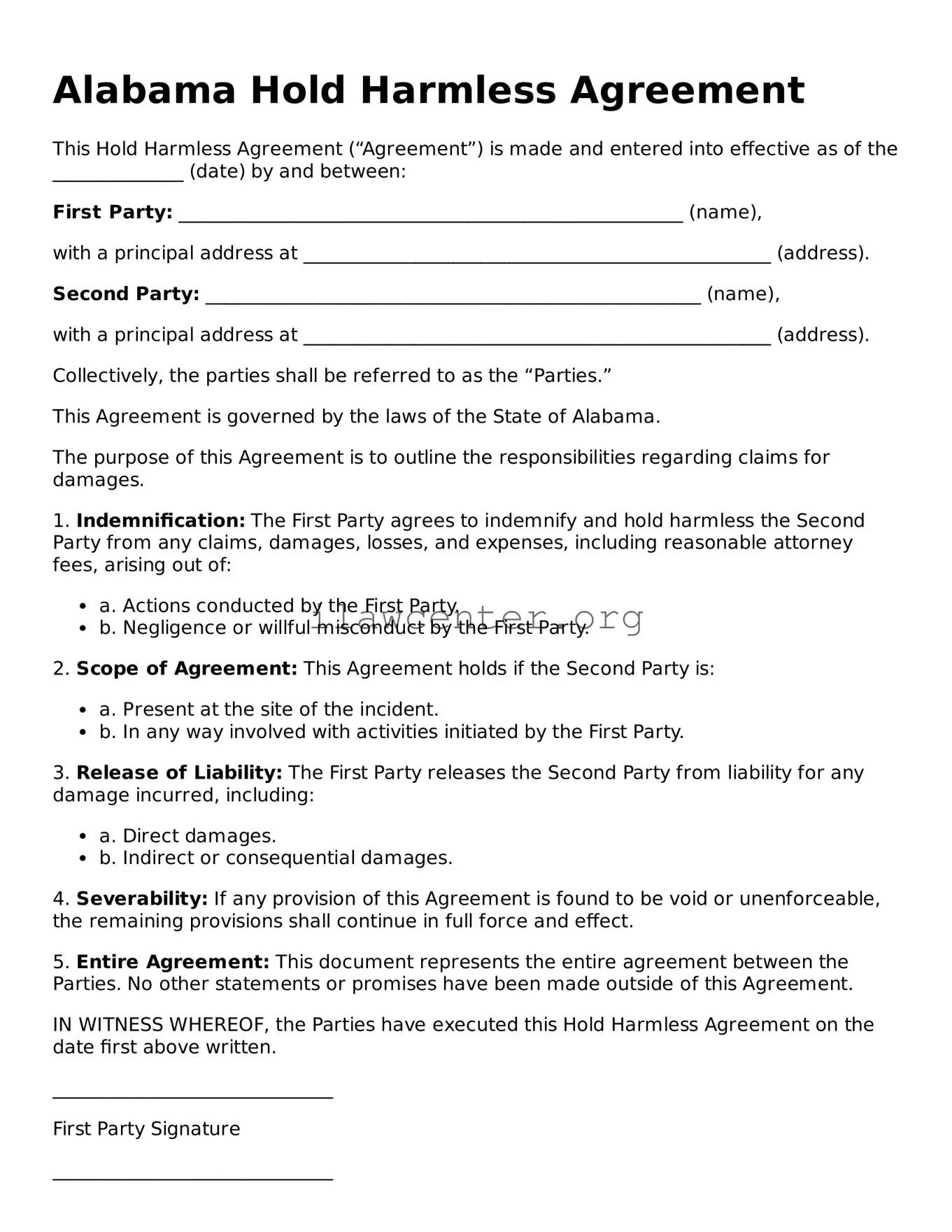Instructions on Utilizing Alabama Hold Harmless Agreement
Once you have the Alabama Hold Harmless Agreement form in front of you, you’re set to fill it out. The form requires specific information, and it’s important to provide all necessary details accurately. Take your time to ensure all sections are completed, as this step is crucial for the document to be valid.
- Begin by entering your name in the first blank provided. Ensure that you write it clearly and correctly.
- Next, fill in your address where indicated. Make sure to include your city, state, and zip code.
- Proceed to the next section, where you'll need to provide the date. Write today’s date in the specified format.
- In the following area, list the specific activity or event for which you are signing the agreement. This should be descriptive enough for clarity.
- Now, identify the party or parties that you wish to hold harmless. Include their names and relevant details as required.
- Complete any additional sections that ask for further details regarding the agreement, ensuring all information is accurate.
- Once all information is filled in, read through the entire form to check for any mistakes or missing information.
- Finally, sign the form at the bottom. Be sure to date your signature as well, if required.
After you’ve completed these steps, make sure to keep a copy of the signed form for your records. You may also want to consult with a legal professional to ensure that everything is in order before any further actions are taken.
